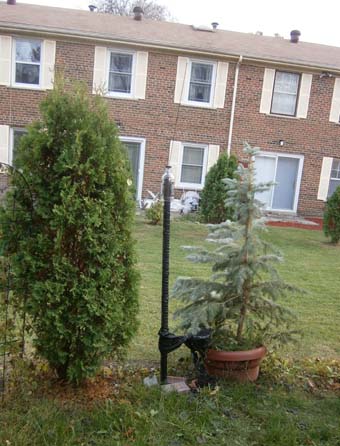


Antentop is FREE e-magazine devoted to Antennas and Amateur Radio an
Special page devoted to
Wires for Antenna and Grounding

Custom Search
|
ANTENTOP- 01- 2013 # 017 |
Wires for Antenna and Grounding |
|
|
|
|
|
|
|
|
|
|
What
kind of conductor should and should not use for an antenna wire
and grounding system? It is usual question that amateur asks himself
at a shop when the person sees lots different wires on the shelves.
The below given Table
could give the answer. Some words about conductors value given in the Table. It is a Specific Resistance, Relative Resistance
and Relative Conductivity. In scientific writings, Specific Resistance is usually
given as resistance between two opposite faces of a cube of the
material at 0 Centigrade. The following table gives the Specific
Resistance for a centimeter cube of the materials, also the relative
resistance and conductivity. Silver, the best conductor, has conductivity of 100%. Relative resistance of a material shows how worst the
material as conductor is, compare to silver. The same things are
to Relative conductivity. RF current flows onto a thin outer layer (so called
"skin effect"). So, as you can see, it ought to be used
silver (!!!!), copper, aluminum material for antenna wire. Zinc and iron may be used with some losses of the RF
energy along the antenna. However, as it is seen from the Table, wires, made of or covered by stainless steel
material, cannot be used for an antenna wire due huge losses.
However, It is possible to find lots such stainless steel wires
intended for utility use at home. Most of the RF energy would
be dissipated on to wire. Therefore the SWR at the antenna would
be good by efficiency very bad. However, wires, made of or covered by stainless steel
material, dug into the ground, may be used at electro- technical
grounding system. To improve the efficiency of the ground system
on the RF it is possible to dig copper wire in strong isolation
together with the stainless steel wires. Copper wires give good
efficiency on RF. Stainless steel wires give good electro- technical
grounding system. What kind of grounding I have seen at some professional
transmitting center it was iron (wire 1... 10 mm in diameter)
net (20... 50- cm x 20... 50- cm) placed on 10... 50- cm above
the ground. |
Points of the big squares (near 1... 2- m x 1... 2-
m) were grounded by iron tube (20... 30- mm in diameter) inserted
into the ground on 1... 1.2- meters deep. Antenna wires for commercial and military LW- MW antennas
as usual made of iron wire covered by copper or zinc. Commercial
antennas for HF may be made from the same wire. Military use to
different stuff for HF antennas. It may be iron wire covered by
copper or zinc, UHF- VHF antenna both military and commercial, as usual
made of aluminum, copper or some stuff covered by aluminum or
copper. My Helical HF antenna (for 10-, 15-, 20-, 30-, 40-
meter Band) made from electrical copper wire (33-cent/m, Home
Depot is supplier). Antenna is fed through buried coaxial (BFLEX,
DAVIS- RF is supplier). Antenna is surrounded by 10 burred counterpoises.
Each counterpoise (3- meter long) consists of two wires. There
is copper wire in strong insulation (similar to antenna wire)
and stainless steel wire (bought in Home Depot). Antenna works
well on all bands.
VA3ZNW Vertical Helical HF Antenna |
|
|
Page- 90 |
90 91
 |
 |
|
 |
Just for Fun:

Powered byIP2Location.com
Thanks for your time!
Last Updated:
January 9, 2020 22:53





